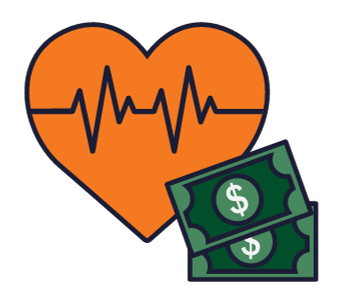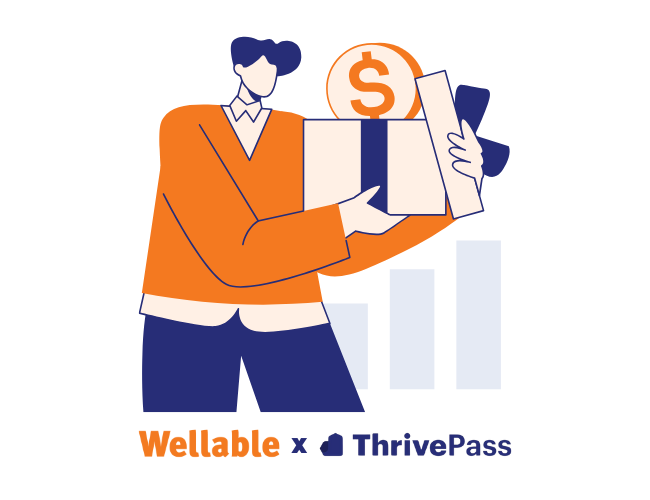In today’s competitive job market, companies are seeking ways to improve their employee benefits packages and promote a healthier workplace. However, budgets can be a limiting factor when rolling out new well-being initiatives, especially with increasing operational costs and growing economic pressures. For organizations looking to boost employee engagement on a budget, their insurance plans may offer a cost-effective solution in the form of wellness dollars.

Pressed for time? Here’s a quick summary…
- Wellness dollars explained: Wellness dollars are insurance-provided funds for health and wellness initiatives within organizations. These not only improve employee well-being and engagement but also make an organization more attractive to job-seekers, who increasingly value wellness.
- Ways to spend wellness dollars: Wellness dollars fund initiatives beyond typical healthcare, from gym memberships and wearable devices to health fairs and lifestyle spending accounts.
- Encouraging employee participation: Organizations can boost wellness program participation by aligning initiatives with employee interests, choosing the right program vendor, and implementing wellness rewards.
What Are Wellness Dollars?

Wellness dollars are insurance-provided funds that an organization can use for health and wellness initiatives. These funds provide employees with health and wellness programs, often at reduced costs or even for free. They typically expire annually, but when employers use them throughout the year, they deliver mutual benefits for the company, its employees, and the insurer. The investment in employee well-being aims to reduce healthcare claims while serving as a powerful tool for talent attraction and boosting employee engagement.
How Do Wellness Dollars Work?
Wellness dollars support initiatives that are distinct from standard healthcare benefits, such as medical appointments and health screenings. Here’s a brief guide to using them:
- Check availability: Confirm if the insurance plan offers wellness dollars. If not, consider discussing their potential benefits, like reduced healthcare costs, with the provider.
- Understand coverage scope: Learn which wellness activities, programs, or items the insurance considers eligible for wellness dollar coverage. This varies, so it’s important to know the plan’s specifics.
- Implement programs: Use these funds for approved health and wellness initiatives.
- Get reimbursed: After you incur the wellness expenses, submit proof of these expenditures through receipts or invoices to the insurance provider for reimbursement.
The key to effectively using wellness dollars is to understand the terms of the insurance plan and apply these funds towards initiatives that align with employees’ needs and the company’s wellness goals. This leads to greater workforce participation, boosted engagement, and improved health.
12 Ways to Spend Wellness Dollars
Below are examples of ways to spend wellness dollars that can encourage employees to invest in their well-being and lead healthier lives.

1. Gym Memberships
Use wellness dollars to subsidize gym memberships, allowing employees to access fitness centers, participate in group classes, and work with personal trainers.

2. Wearable Devices
Purchase wearable fitness devices for employees, like Fitbits or Apple Watches. They can use them to monitor steps, heart rate, sleep patterns, and more. These real-time health insights can shape employees’ fitness goals and help them track their progress, creating a sense of ownership over their health. They can also encourage participation in step challenges, sleep challenges, and other wellness initiatives.
3. Live & On-Demand Fitness Classes
Host on-site fitness classes or provide access to on-demand virtual options that cater to various preferences and schedules. Group fitness classes create an opportunity for colleague socialization, improving team dynamics and morale.
4. Mindfulness & Meditation Workshops

Support employee mental health with mindfulness and meditation workshops that teach stress-reduction techniques and help them manage daily pressures.
5. Self-Defense Classes
Use wellness dollars to fund self-defense classes, empowering employees with the knowledge and skills for personal safety. This boosts their confidence in confrontational or dangerous situations.
6. Healthy Cooking Classes

Organize in-person or virtual healthy cooking classes. These can be hosted in a kitchen or workshop space, allowing employees to get hands-on experience preparing nutritious dishes. For a simpler option, host a smoothie demonstration, which is easy to organize and participate in while encouraging healthy food choices.
7. Wellness Challenges
Host employee wellness challenges to encourage employees to get active, build team connection, or foster workplace purpose. Challenges can encompass various goals from achieving a certain number of steps to practicing sustainability. These initiatives promote friendly competition and positive lifestyle changes.
8. Health Fairs

Allow employees to explore available health and wellness resources and services through a health fair. These fairs, whether virtual or on-site, can feature online booths or physical stands with information on benefits, wellness programs, and resources for improving various dimensions of well-being. A virtual health fair enables employees to conveniently participate without leaving their workspaces, while an on-site option enables in-person interactions. Both formats increase accessibility and provide opportunities for employee education and engagement in wellness initiatives.
9. Team-Building Activities
Use wellness dollars for team-building activities, promoting collaboration and social wellness. Activities like team outings, workshops, and community service projects help employees build meaningful relationships and improve their sense of belonging in the workplace.
10. Mental Healthcare

Prioritize employees’ mental health by funding therapy and other mental healthcare with wellness dollars. This can include individual or group therapy sessions, counseling services, and stress management programs.
11. Conflict Resolution Training
Invest in conflict resolution training programs to teach effective communication strategies, emotional intelligence, and conflict prevention tactics. These trainings can increase employee resilience and improve team collaboration and connection.
12. Lifestyle Spending Accounts (LSA)
Put wellness dollars toward employees’ LSA stipends, giving them flexibility in their well-being journey. Employees can spend their funds on various lifestyle-related expenses, from fitness memberships and financial wellness workshops to personal development courses and wellness retreats.
Make the Most of Wellness Dollars: Encourage Employee Participation

Wellness programs can improve employee health, productivity, and retention, but active participation and long-term engagement are key to experiencing meaningful outcomes. To effectively engage employees in wellness initiatives, consider taking the following steps.
- Conduct employee surveys: Gauge employees’ health preferences and needs, then select relevant wellness initiatives that will resonate with the team. This can lead to higher participation and improved health outcomes.
- Select wellness vendors: Choose wellness program vendors that offer a wide range of wellness initiatives so employees can personalize their experience based on their interests and goals. Check that these programs qualify for insurance reimbursement, ensuring a seamless integration into wellness initiatives.
- Implement wellness rewards: Integrate wellness rewards and recognition with the program to incentivize employee participation. This encourages wider program adoption and long-term engagement.
- Measure impact: Regularly track and assess the effectiveness of the wellness program. Focus on key metrics like employee satisfaction, engagement levels, and participation rates. This data will guide future decisions, helping to maintain or adjust the program for maximum benefit.
This article was last updated on June 11, 2025


















